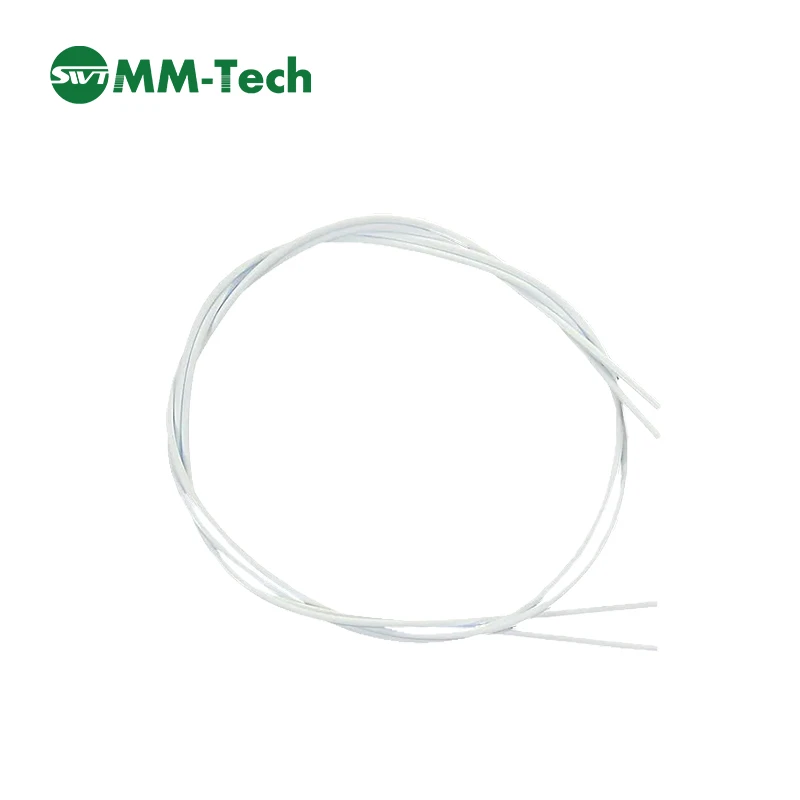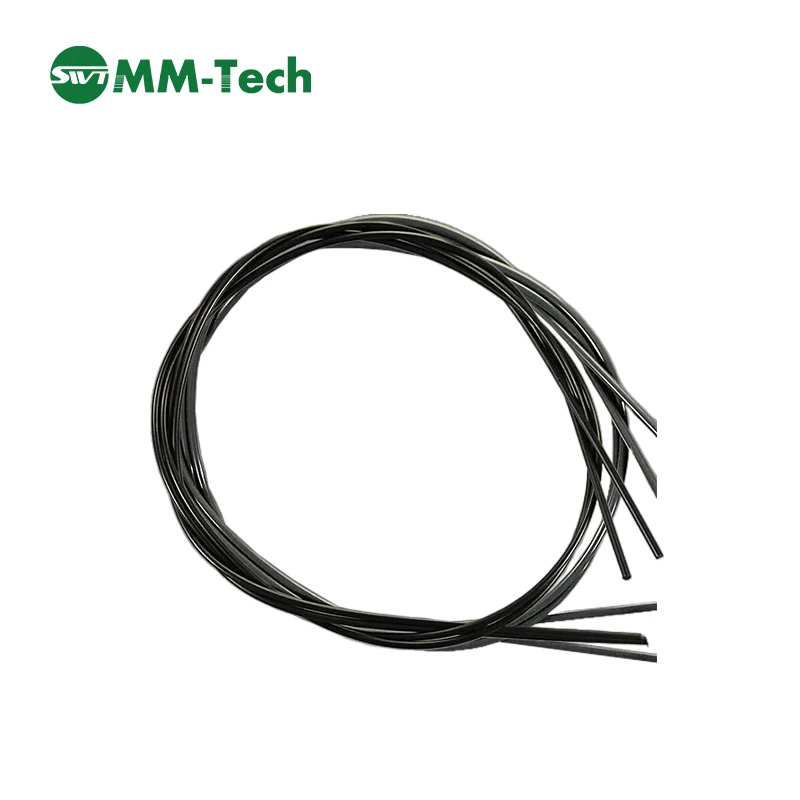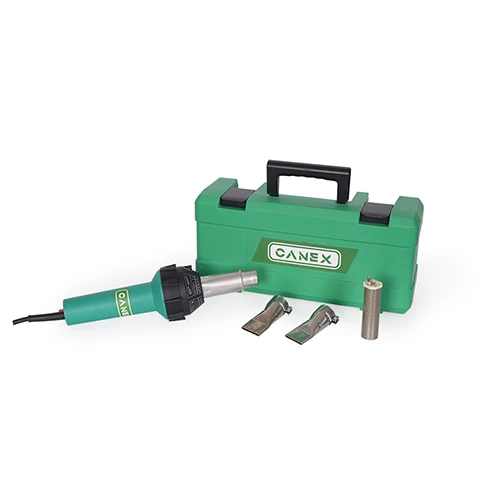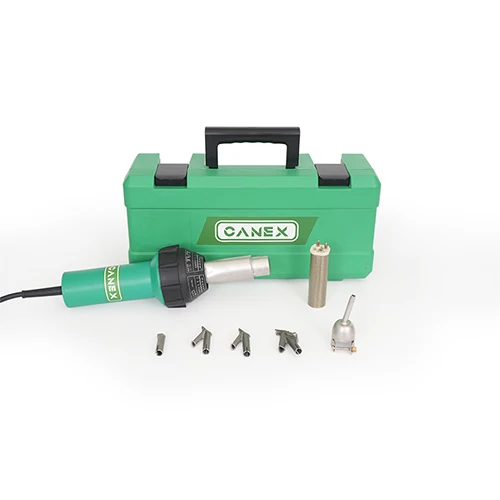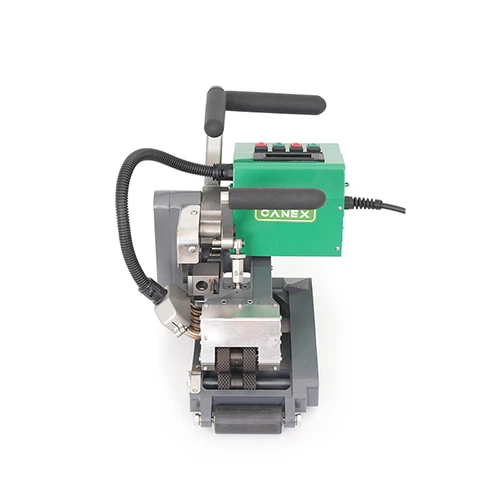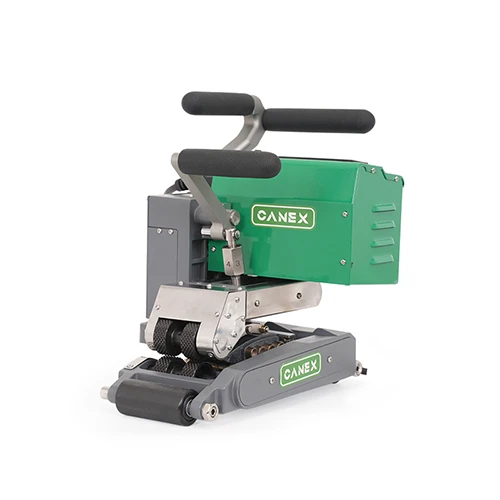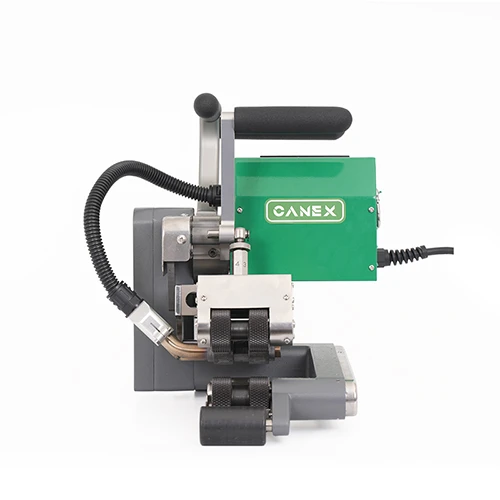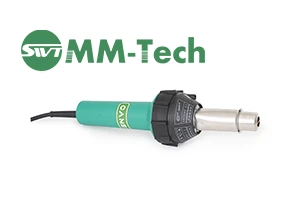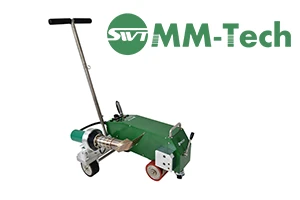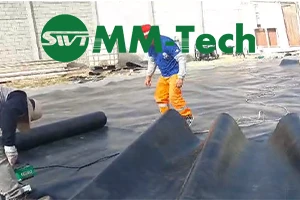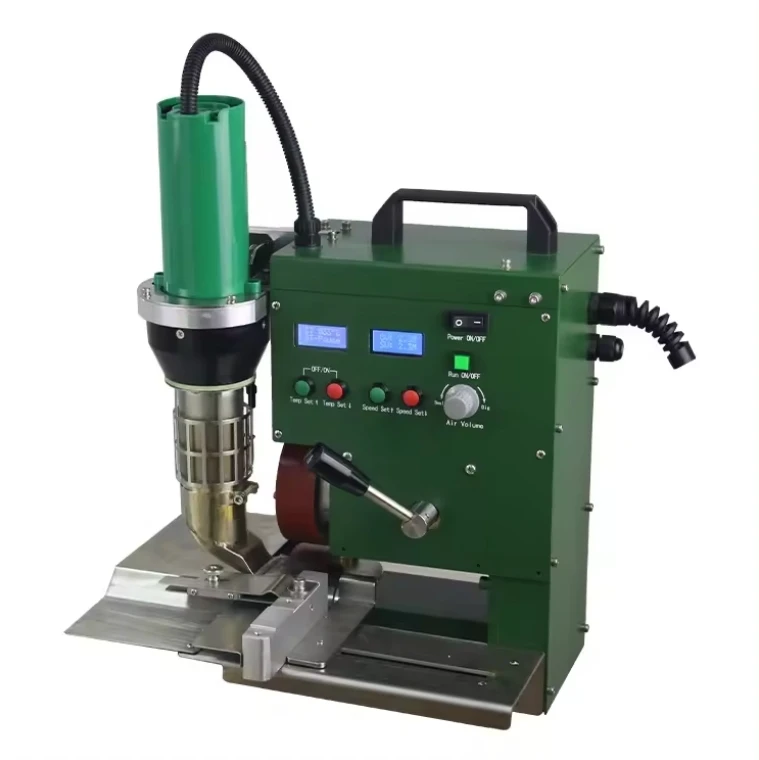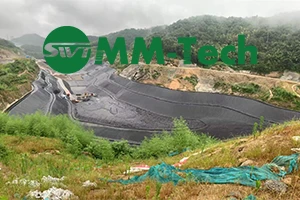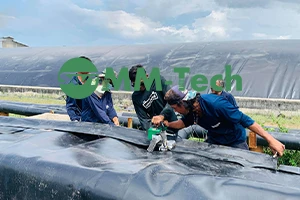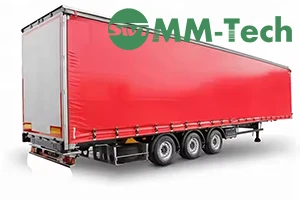-
 Email:info@peweldingmachine.com
Email:info@peweldingmachine.com
-
 +86-137 3974 5191
+86-137 3974 5191
-
 Add:
Add:NO.355,Youyi Street,Qiaoxi District,Shijiazhuang,Hebei,China.
Professional Hot Air Welder for Plastic & TPO Welding
8月 . 14, 2025 05:40
Understanding the Modern Hot Air Welder and Industry Trends
The demand for robust, reliable, and efficient welding solutions in thermoplastic materials has significantly propelled the evolution of the hot air welder. This technology is critical across diverse sectors, including civil engineering, environmental protection, and industrial fabrication, where the integrity of plastic linings and structures is paramount. Industry trends indicate a strong shift towards automated and semi-automated systems that offer enhanced precision, faster deployment, and superior seam quality. Furthermore, an increasing emphasis on sustainable practices is driving innovations in hot air welding, leading to machines that consume less energy while maintaining optimal performance. The market is also seeing a rise in specialized applications requiring bespoke solutions, highlighting the need for versatile and adaptable welding equipment. As materials science advances, the capability of a hot air welder to handle a wider array of polymers, including advanced composites, becomes a key differentiator.
Beyond basic functionality, modern hot air welders are integrating advanced features such as digital temperature control, real-time data logging, and GPS tracking for large-scale projects, enabling better project management and quality assurance. The adoption of the hot air welder for plastic applications, specifically in the construction of landfill liners, retention ponds, and intricate piping systems, underscores its indispensable role. Manufacturers are now focusing on improving user ergonomics, reducing machine weight, and enhancing portability without compromising power or durability. This continuous innovation ensures that the technology remains at the forefront of thermoplastic welding, providing reliable solutions for demanding industrial environments. The global market anticipates steady growth, driven by infrastructure development and the increasing use of geomembranes and other plastic materials in civil engineering projects worldwide.
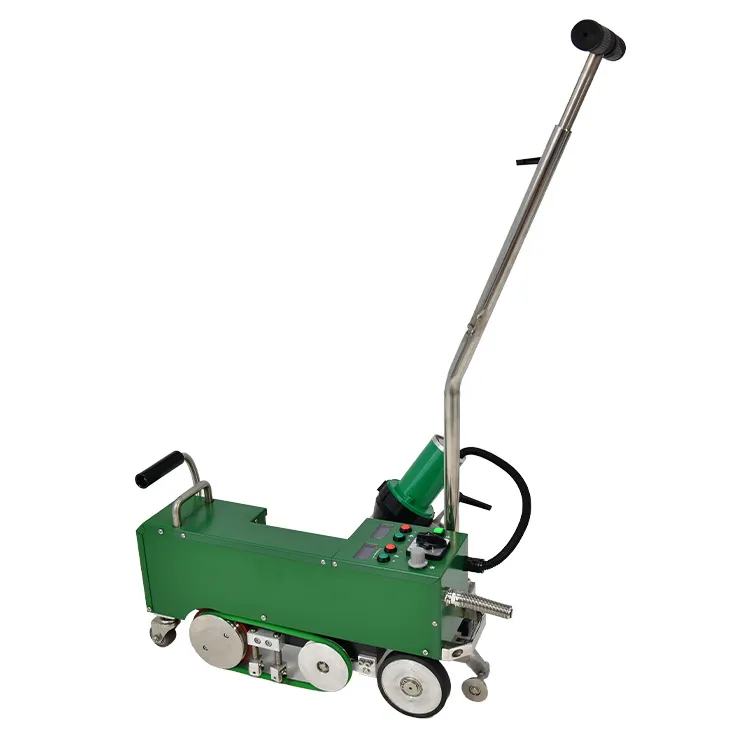
Polymer Hot Air Welder SWT-WP1 Plus: A Technical Deep Dive
The Polymer Hot Air Welder SWT-WP1 Plus represents a pinnacle in welding technology for various polymer materials. Engineered for precision and longevity, this advanced plastic air welder is specifically designed to handle challenging projects requiring consistent and robust seams. Its core strength lies in its ability to achieve uniform heating and pressure application, crucial for materials such as HDPE, LDPE, EVA, PVC, TPO, and others commonly used in geomembrane installation. The machine boasts a sophisticated temperature control system, ensuring optimal heat distribution throughout the welding process, which is vital for preventing material degradation and ensuring high bond strength. With a focus on operational efficiency, the SWT-WP1 Plus minimizes setup time and maximizes welding speed, directly contributing to project cost-effectiveness and timely completion.
The design incorporates durable components capable of withstanding harsh environmental conditions typical of construction sites. Its intuitive interface allows operators to easily monitor and adjust parameters, ensuring adaptability across different material thicknesses and ambient temperatures. The precise control over welding speed, temperature, and pressure, often referred to as the "three parameters" of hot air welding, makes the SWT-WP1 Plus an indispensable tool for achieving compliance with stringent quality standards. This attention to detail in engineering ensures that every weld performed by the SWT-WP1 Plus stands up to rigorous inspection, providing peace of mind for B2B clients who prioritize structural integrity and long-term performance.
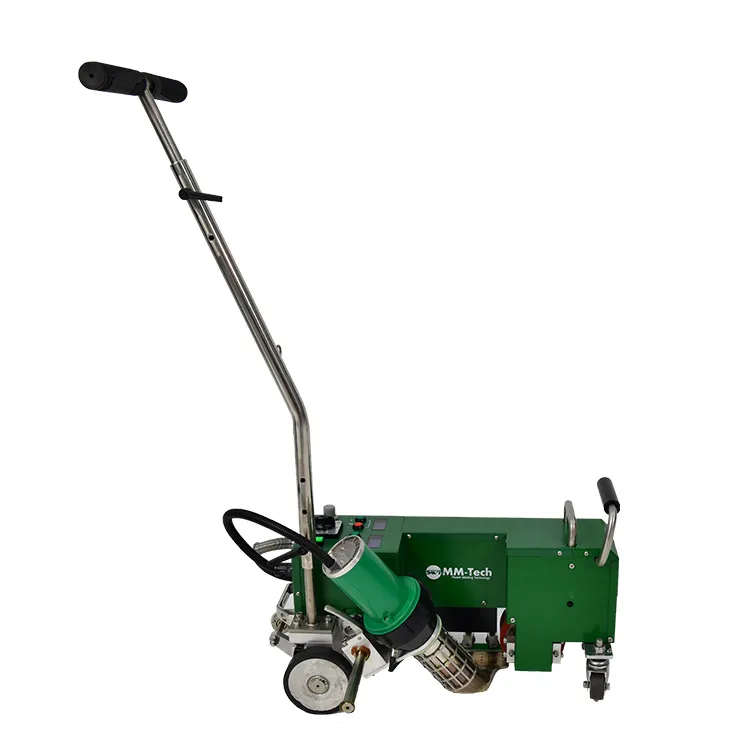
Unpacking the Manufacturing Process of High-Performance Hot Air Welders
The creation of a high-performance hot air welder involves a sophisticated multi-stage manufacturing process, ensuring precision, durability, and reliability. This begins with the selection of premium-grade materials, including high-strength alloys for the chassis and advanced heat-resistant polymers for critical internal components. For structural integrity, processes such as precision casting or forging are employed to shape robust frames that can withstand continuous operational stress. Critical parts, including the heating element housing and drive mechanisms, often undergo CNC machining to achieve exact tolerances, vital for consistent welding performance. Each component is meticulously assembled in a clean environment to prevent contamination and ensure optimal functioning.
Quality control is integrated at every stage, not just at the end. In-process inspections adhere to international standards such as ISO 9001 for quality management and ANSI standards for product performance. This includes dimensional checks, material composition verification, and functional testing of sub-assemblies. The finished heat welder for tpo and other materials undergoes rigorous calibration and stress testing to validate its temperature stability, motor efficiency, and seam strength capabilities. Expected service life for a well-maintained industrial hot air welder can exceed 10-15 years, a testament to robust design and manufacturing. In industries like petrochemical, metallurgy, and water supply, where leakage prevention is critical, the precise and corrosion-resistant welds produced by these machines offer significant advantages, contributing to energy efficiency by preventing fluid loss and reducing maintenance costs associated with material degradation.
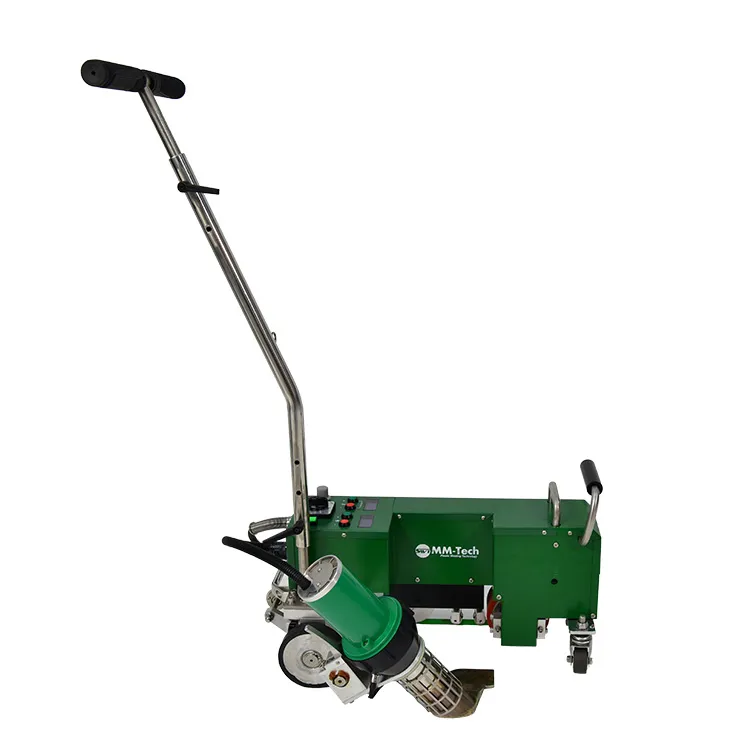
Key Technical Parameters and Performance Metrics
Understanding the technical parameters of a hot air welder is crucial for selecting the right equipment for specific project requirements. These parameters directly influence performance, efficiency, and the quality of the weld. Key metrics include welding speed, temperature range, motor power, and maximum material thickness. For instance, welding speed, typically measured in meters per minute (m/min), dictates project completion time, while a broad temperature range (e.g., 0-450°C) allows for versatility across different polymer types like HDPE, PVC, and TPO. The motor's power output directly correlates with the machine's ability to maintain consistent speed and pressure, especially on inclined surfaces or challenging terrain.
The following table provides typical technical specifications for an industrial-grade hot air welder, offering a benchmark for comparison and illustrating the robust capabilities essential for demanding B2B applications. This data highlights the engineering precision required to achieve optimal geomembrane and plastic sheet welding performance.
| Parameter | Value Range | Unit | Notes |
|---|---|---|---|
| Input Voltage | 220-240 | V | Single Phase |
| Power | 1800-3000 | W | Depends on model and heating element |
| Welding Speed | 0.5 - 6.0 | m/min | Adjustable, influenced by material |
| Welding Temperature | 0 - 450 | °C | Electronically controlled |
| Weld Seam Width | 12.5 - 20 | mm | Double or Triple Track |
| Material Thickness | 0.2 - 2.5 | mm | Suitable for various geomembranes |
| Weight | 12 - 20 | kg | Portable and maneuverable |
| Insulation Class | Class II | Enhanced safety |

Diverse Application Scenarios and Industry Benefits
The versatility of the hot air welder extends across a myriad of industrial and environmental applications, making it an indispensable tool for engineers and contractors. Its primary use case revolves around the welding of geomembranes for landfill lining, where impenetrable barriers are critical for preventing leachate contamination of groundwater. Similarly, in the construction of water retention ponds, agricultural irrigation reservoirs, and fish farms, the hot air welder for plastic ensures watertight seals that prevent leakage and minimize water loss. Beyond large-scale civil engineering projects, these welders are crucial for tunnel waterproofing, basement damp-proofing, and the creation of flexible storage tanks for various liquids.
In industrial settings, the plastic air welder is employed for the fabrication of chemical tank linings, enabling the safe storage of corrosive substances by providing a protective, non-reactive layer. It is also extensively used in mining for heap leach pads and tailings dam liners, ensuring environmental compliance and operational safety. The ability of a heat welder for tpo to create durable, uniform seams under challenging conditions – be it high altitudes, varying temperatures, or uneven terrain – makes it highly valuable. The benefits include significantly reduced project timelines due to efficient welding speeds, lower labor costs, and a substantial increase in the long-term integrity and lifespan of the installed plastic structures, leading to substantial cost savings and enhanced environmental protection.
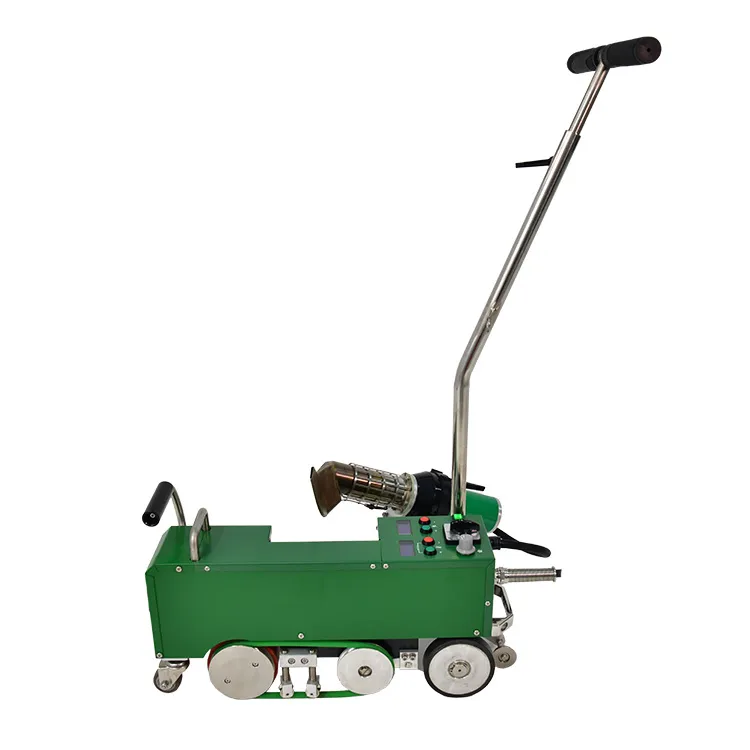
Strategic Advantages of Advanced Hot Air Welding Technology
Investing in an advanced hot air welder like the Polymer Hot Air Welder SWT-WP1 Plus offers numerous strategic advantages that translate into significant operational efficiencies and project quality improvements for B2B stakeholders. One primary advantage is the exceptional seam integrity achieved through precisely controlled heat and pressure, which creates a homogenous bond stronger than the parent material in many cases. This minimizes the risk of leaks and failures, critical in environmental containment or hazardous material storage applications. Compared to traditional adhesive or mechanical joining methods, hot air welding produces a monolithic structure, eliminating weak points and ensuring long-term durability, often exceeding the expected lifespan of the project itself.
Furthermore, the speed and efficiency of modern hot air welder systems drastically reduce project completion times, leading to lower labor costs and earlier project commissioning. The technology is also highly adaptable to varying site conditions, including gradients and confined spaces, enhancing its versatility. Advanced models often include features such as automatic start/stop and reverse functions, further streamlining operations and reducing operator fatigue. The inherent safety of hot air welding, which avoids open flames or potentially hazardous solvents, adds another layer of benefit, aligning with stringent industrial safety protocols. For companies focused on delivering high-quality, compliant, and cost-effective geomembrane installations, the strategic benefits of this technology are clear and measurable.
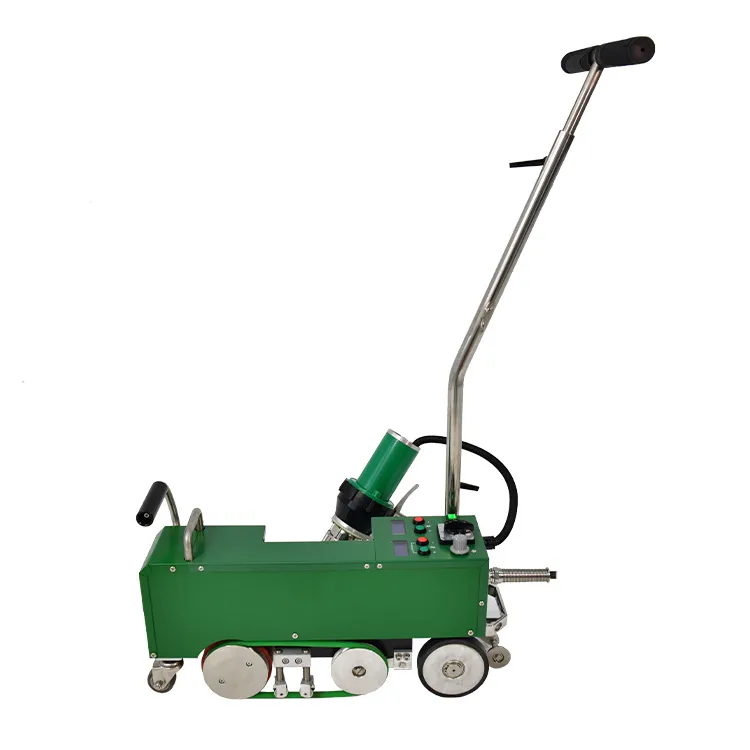
Navigating Manufacturer Offerings and Custom Solutions
When selecting a hot air welder, B2B clients face a landscape of manufacturers, each with unique strengths. Key considerations extend beyond basic specifications to encompass aspects like after-sales support, spare parts availability, and the ability to provide custom solutions. While generic models cater to standard requirements, complex projects often benefit from tailored welding equipment. For example, specific welding widths, enhanced motor power for steep inclines, or integrated data logging systems for quality assurance on large-scale civil engineering projects might require customization. Manufacturers with extensive R&D capabilities and a strong track record in developing specialized equipment are better positioned to meet these diverse needs.
A thorough vendor comparison should include evaluating their industry experience (e.g., years in service), their portfolio of successful application cases, and their commitment to adherence to international standards like ISO 12176-2 for welding machinery. For the Polymer Hot Air Welder SWT-WP1 Plus, the manufacturer's deep understanding of polymer welding ensures that the product is not just a standard offering but a solution designed with real-world challenges in mind. This includes ergonomic designs for extended use, robust construction for demanding environments, and modular components for easier maintenance and upgrades. Engaging with manufacturers who offer comprehensive consultation services and can demonstrate flexibility in product modification is crucial for optimizing project outcomes and ensuring long-term equipment value.
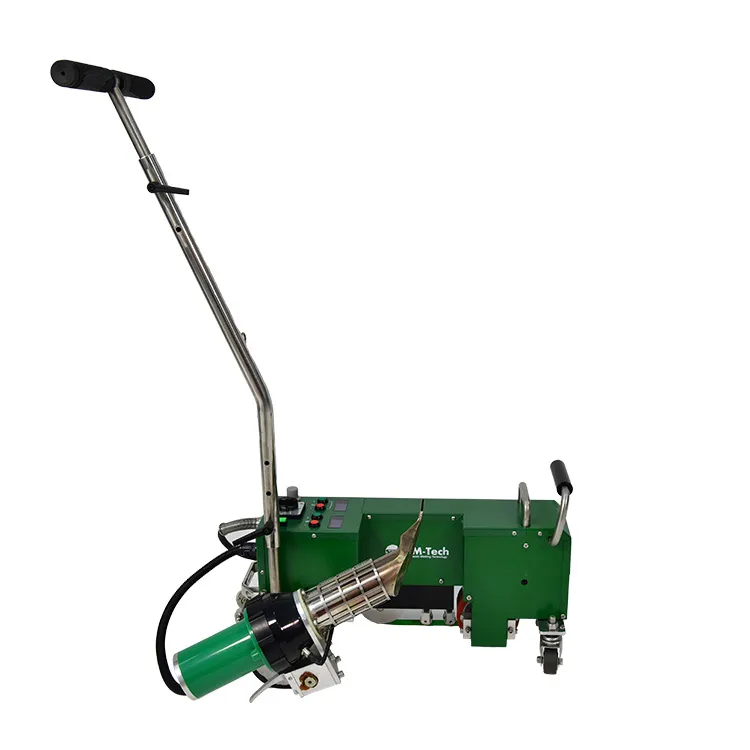
Real-World Application Case Studies and Client Success
The efficacy of a hot air welder is best demonstrated through its performance in real-world application cases. Consider a recent large-scale landfill expansion project in a challenging desert environment. The client required the installation of over 1.5 million square meters of HDPE geomembrane. Using the Polymer Hot Air Welder SWT-WP1 Plus, the contractor was able to maintain a consistent welding speed of 5.5 m/min across various slopes, even with ambient temperatures exceeding 40°C. Quality control inspections, including non-destructive air pressure tests and destructive peel/shear tests, consistently showed seam strengths surpassing industry benchmarks (e.g., 95% of parent material strength), leading to zero leaks during initial hydrostatic testing. This efficiency resulted in the project being completed 15% ahead of schedule, translating into significant cost savings for the client.
Another compelling case involves a mining company in a mountainous region needing to construct a complex heap leach pad. The rugged terrain and fluctuating temperatures posed significant challenges for their previous welding equipment. The advanced temperature compensation and robust drive system of the SWT-WP1 Plus allowed for seamless welding on grades up to 30 degrees, maintaining precise weld parameters. Client feedback highlighted the machine’s reliability and ease of use, even for extended shifts. "The SWT-WP1 Plus significantly improved our weld quality and overall project efficiency," noted the project manager. "Its consistent performance saved us countless hours in reworks and ensured the integrity of our environmental containment system." These examples underscore the tangible benefits and proven track record of a high-quality hot air welder in demanding industrial contexts.
Ensuring Trust and Reliability: Guarantees and Support
For B2B buyers, the decision to invest in a hot air welder is not solely based on initial purchase price but heavily on the assurance of long-term reliability and manufacturer support. A comprehensive warranty is paramount; for the Polymer Hot Air Welder SWT-WP1 Plus, a standard 2-year warranty on major components and 1-year on wear parts (excluding heating elements) provides substantial peace of mind. This commitment signifies confidence in the product's engineering and build quality. Beyond the warranty, the availability of technical support and readily accessible spare parts is critical for minimizing downtime and maximizing operational continuity.
Our customer support extends globally, with dedicated technicians available for troubleshooting and guidance, often via remote assistance or on-site visits for complex issues. The typical delivery cycle for the SWT-WP1 Plus is 10-15 business days, ensuring projects can commence without undue delays. Furthermore, we offer comprehensive training programs for client operators, ensuring they are proficient in the safe and efficient operation and maintenance of the hot air welder. This holistic approach to customer service, coupled with stringent manufacturing standards (e.g., CE conformity, adherence to ASTM D7273 for geomembrane welding), builds profound trust, positioning the product as a reliable long-term asset rather than just a piece of equipment.
Frequently Asked Questions (FAQ) about Hot Air Welders
Q1: What materials can the Polymer Hot Air Welder SWT-WP1 Plus weld?
A1: The SWT-WP1 Plus is highly versatile and capable of welding a wide range of thermoplastic materials, including but not limited to HDPE (High-Density Polyethylene), LDPE (Low-Density Polyethylene), EVA (Ethylene Vinyl Acetate), PVC (Polyvinyl Chloride), TPO (Thermoplastic Polyolefin), and various other geomembranes. Its precise temperature control allows for optimal bonding across these diverse polymer chemistries.
Q2: How does a hot air welder ensure seam integrity?
A2: Seam integrity is ensured by the precisely controlled application of heat and pressure. The hot air softens the overlapping edges of the material, which are then fused together under constant, calibrated pressure from drive wheels. Modern hot air welders incorporate digital feedback loops to maintain consistent temperature and speed, ensuring a homogeneous and robust weld, often stronger than the parent material itself. Post-weld testing, such as air pressure or destructive peel tests, further validates integrity.
Q3: What maintenance is required for a plastic air welder?
A3: Regular maintenance for a plastic air welder typically involves cleaning the heating element and nozzle, inspecting and cleaning the drive wheels for any plastic residue, checking electrical connections, and ensuring all moving parts are properly lubricated. It is also important to periodically verify the calibration of temperature and speed settings. Adhering to the manufacturer's recommended maintenance schedule, usually outlined in the operation manual, will significantly extend the machine's lifespan and ensure optimal performance.
Q4: Can this heat welder for tpo be used in all weather conditions?
A4: While robust, optimal performance for any heat welder for tpo and other geomembranes is typically achieved in dry conditions. Extreme cold can affect material flexibility and require higher temperatures, while strong winds can dissipate heat, necessitating windbreaks. Modern welders like the SWT-WP1 Plus are designed to compensate for some environmental variations, but it's always recommended to consult the operational guidelines for specific temperature and humidity limits and to use protective measures when working in adverse weather.
Authoritative References
- Koerner, R. M. (2012). Designing with Geosynthetics (6th ed.). Pearson Prentice Hall.
- ASTM International. (2018). ASTM D7273-18: Standard Practice for Seaming Geosynthetic Liners by Hot Wedge or Extrusion Welding.
- Giroud, J. P., & Beech, J. F. (2015). Geomembranes: Development and Applications. CRC Press.
- ISO 9001:2015 - Quality management systems — Requirements. International Organization for Standardization.
 Pervious
Pervious
This is the first article
Related Products
Related Video
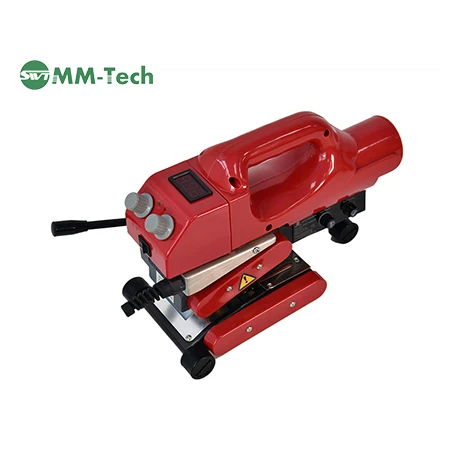

Geo Hot Wedge Welder With Digital Display SWT NS800D Operation Guide
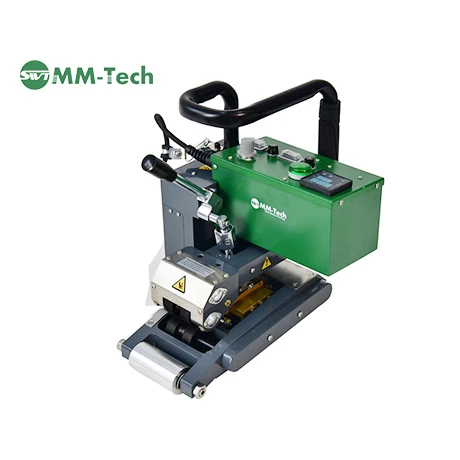

Heavy-Duty Geo Hot Wedge Welder SWT-NS900 Operation Guide
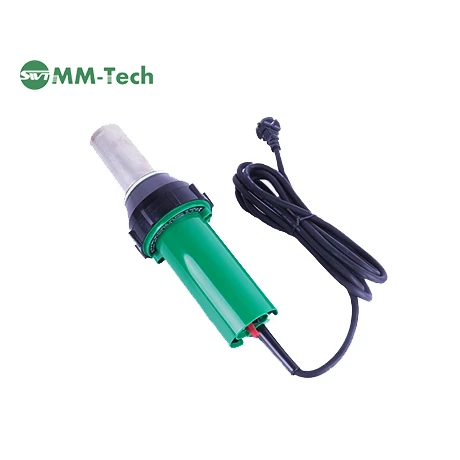

Powerful Professional Hot Air Tool SWT-NS3400A Operation Guide
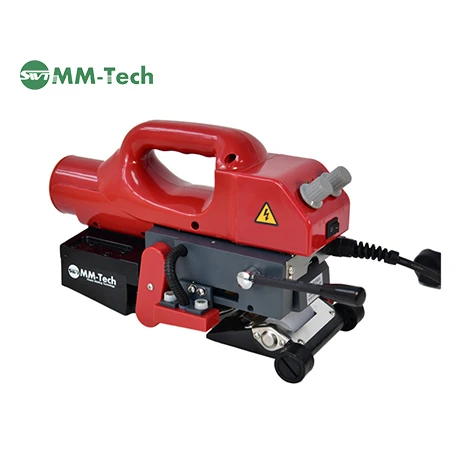

Geo Hot Wedge Welder SWT NS800 Operation Guide
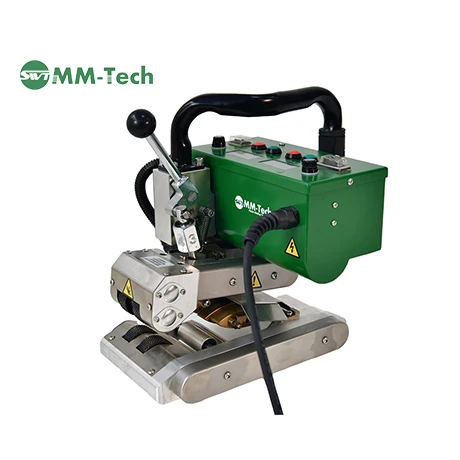

Compact HDPE Hot Wedge Welding Machine SWT-NSGM1 Operation Guide
Related News
SUBSCRIBE NEWSLETTER
Dear customer, thank you for your attention! We provide high-quality machinery and equipment and look forward to your orders. Please inform us of your needs and we will respond quickly!








